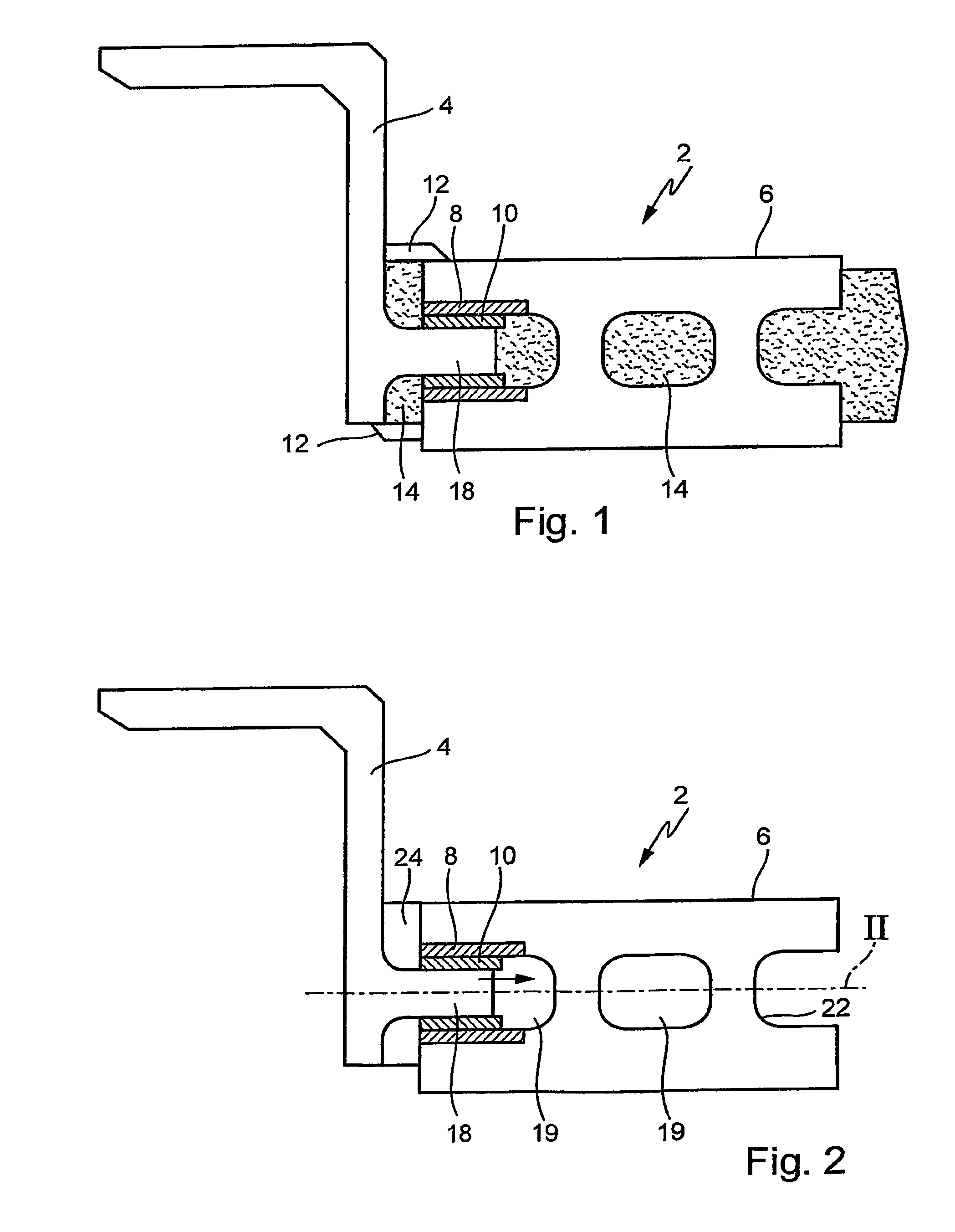Method for the production of a brake disk and brake disk
a technology of brake disks and cylinders, which is applied in the direction of brake discs, brake types, mechanical devices, etc., can solve the problems of complicated procedure, excessive wear, and limited radial expansion by rigid retaining bolts
- Summary
- Abstract
- Description
- Claims
- Application Information
AI Technical Summary
Benefits of technology
Problems solved by technology
Method used
Image
Examples
Embodiment Construction
[0021]Ten pairs of two bodies each inserted into one another in the shape of cylindrical bushing pairs are placed in a core box in an annular shape (8, 10 in FIG. 1). Core sand is shot into the core box and solidified. A solidified casting core (core) encloses bushing pairs 8, 10 in some areas, whereby bushing pairs 8, 10 are fixed in the core and become an integral part thereof.
[0022]The core is placed in a casting mold; the brake disk is cast using a method known per se. The metal is cast from a bottom of a friction ring area; the melt flows upward via bridge channels, which form bridges 12 in the cast brake disk, to a hub area. The cast brake disk is then cooled down in a controlled manner.
[0023]FIG. 1 shows a cross section of an unfinished brake disk 2 after casting, core 14 being still enclosed by brake disk 2. Brake disk 2 has a brake disk hub (hub) 4 and a friction ring 6. Hub 4 and friction ring 6 are joined via bridges 12 in this state.
[0024]Core 14 is molded in such a way ...
PUM
| Property | Measurement | Unit |
|---|---|---|
| radial thermal expansion | aaaaa | aaaaa |
| axis of movement | aaaaa | aaaaa |
| shrinkage | aaaaa | aaaaa |
Abstract
Description
Claims
Application Information
 Login to View More
Login to View More - R&D
- Intellectual Property
- Life Sciences
- Materials
- Tech Scout
- Unparalleled Data Quality
- Higher Quality Content
- 60% Fewer Hallucinations
Browse by: Latest US Patents, China's latest patents, Technical Efficacy Thesaurus, Application Domain, Technology Topic, Popular Technical Reports.
© 2025 PatSnap. All rights reserved.Legal|Privacy policy|Modern Slavery Act Transparency Statement|Sitemap|About US| Contact US: help@patsnap.com



